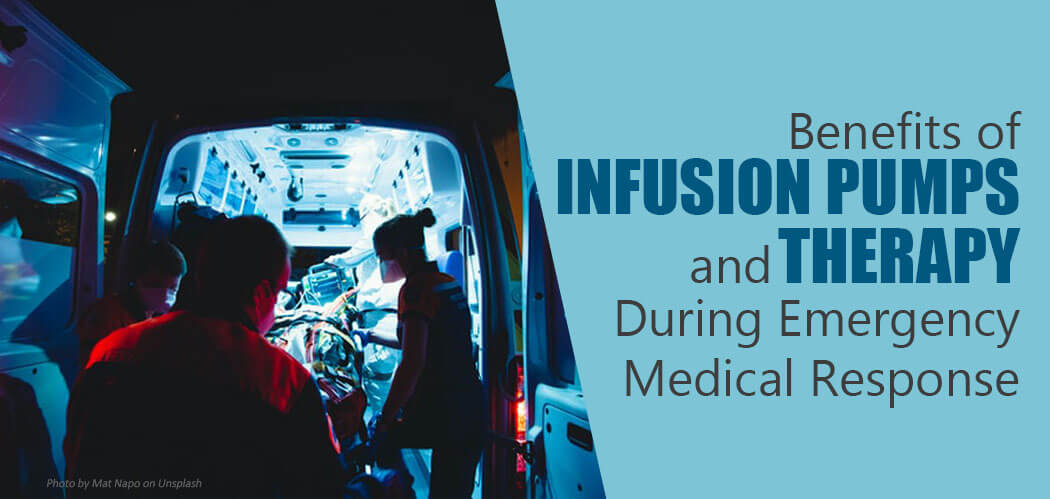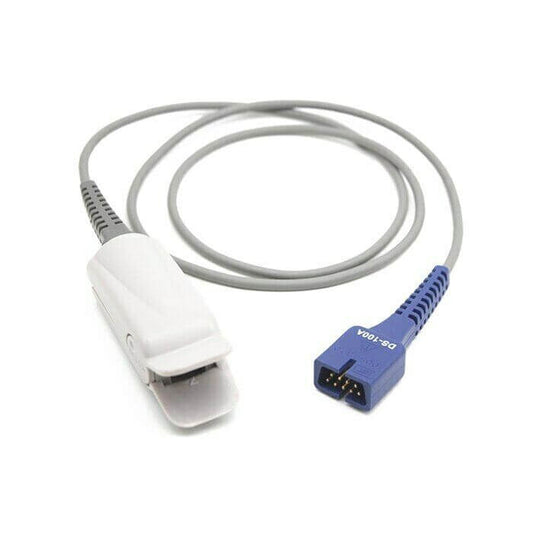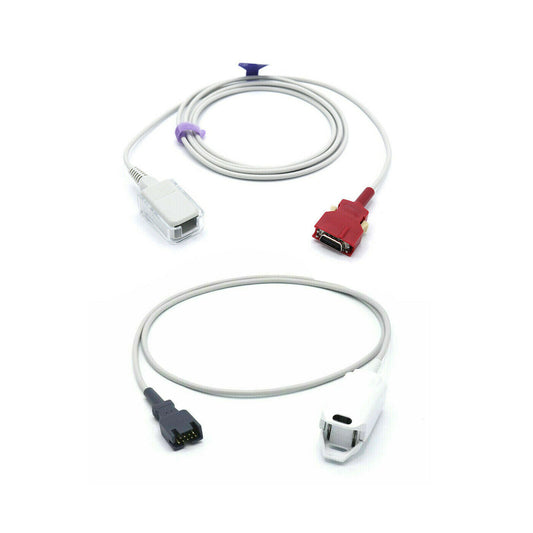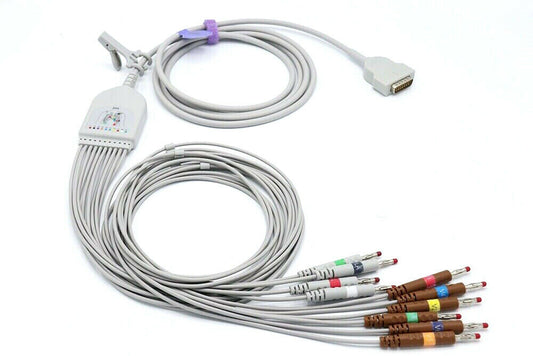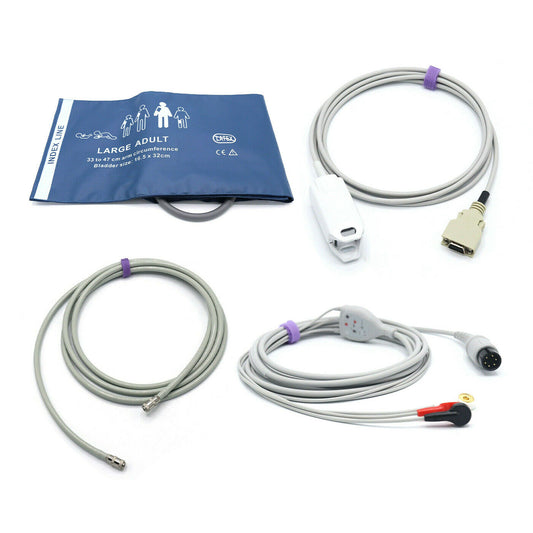Benefits of Infusion Pumps and Therapy During Emergency Medical Response

Upon arriving at a medical emergency, emergency services must decide whether to provide medical care on scene or to wait until arrival at a hospital. Both scenarios carry their own risks, as treating on-scene loses time, but transporting immediately may leave the patient untreated for a condition that is time-sensitive and life-threatening.
Oftentimes, immediate treatment is necessary and can improve outcomes. However, this level of care requires medical grade devices, such as ventilators, defibrillators, ECG monitors, and intravenous (IV) infusion pumps. Infusion pumps and therapy are of particular importance in emergency response. Use of these devices have many benefits, some of which will be discussed in this article.

Reduce errors
IV infusion pumps can help to reduce errors associated with dosing. Depending on the experience level, some paramedics may not have the breadth of expertise or the support of the inter-disciplinary medical team when making decisions on site. Additionally, the likelihood of mistakes may be greater in emergency situations due to the severity and sensitivity of emergency situations. One study evaluated how practicing paramedics performed on a drug calculation examination. Performance was less than ideal, with an average total score of 51.4 percent amongst participants. Strikingly, the average score for IV flow rate and medication bolus problems, non-weight-based medication infusions, weight-based medication infusions, and percentage-based medications infusions were 68.8%, 33.9%, 32.5%, and 4.5%, respectively1.
With such a high possibility of miscalculations, the risk of dosing errors and consequent medical errors is also high. More advanced infusion pumps are programmed to mitigate these risks. For example, newer devices include pre-defined doses, dose thresholds and ranges, and other measures relating to continuous and bolus administration. These features help to reduce the likelihood of mistakes by implementing technology and adding barriers to error2.

Saves time and resources
Automating some of the emergency service responsibilities allows for quicker delivery of care. In certain life-threatening situations, an important predictor of morbidity and mortality is the time between onset of an emergency and subsequent medical care. In fact, the longer emergency services stay on-scene, the increased likelihood of mortality in trauma patients3. Advanced infusion pumps can help to save time by calculating doses and infusion rates, thus allowing for more rapid delivery of care without delay. Additionally, with this extra time, paramedics can then focus more on other supportive care measures for the patient.

Improves outcomes
Providing infusion treatment during an emergency response can actually improve patient outcomes. One study analyzed how systolic blood pressure (SBP) upon hospital arrival correlated with mortality risk in patients with out-of-hospital cardiac arrest (OHCA). Findings demonstrated that an SBP lower than 90 mmHg led to decreased odds of survival at discharge. Likewise, EMS utilization of IV fluids and adrenaline could improve survival in such patients. Therefore, having infusion technology on-hand could be critical to bettering clinical outcomes in medical emergencies4.
Conclusion
IV infusion pumps and therapy allow for the delivery of medications with programmed doses, flow rates, and volumes. This technology allows for more optimal emergency care by increasing the accuracy and speed at which life-saving medications are delivered.
References
- Hubble, M. W., Paschal, K. R., & Sanders, T. A. (2000). Medication calculation skills of practicing paramedics. Prehospital Emergency Care: Official Journal of the National Association of EMS Physicians and the National Association of State EMS Directors, 4(3), 253–260. https://doi.org/10.1080/10903120090941290
- Can we do more to reduce medication errors? (n.d.). EMS1. Retrieved March 11, 2022, from https://www.ems1.com/medication-error/articles/can-we-do-more-to-reduce-medication-errors-5V1waStdnyVgWd5G/
- Pham, H., Puckett, Y., & Dissanaike, S. (2017). Faster on-scene times associated with decreased mortality in Helicopter Emergency Medical Services (Hems) transported trauma patients. Trauma Surgery & Acute Care Open, 2(1), e000122. https://doi.org/10.1136/tsaco-2017-000122
- Bray, J. E., Bernard, S., Cantwell, K., Stephenson, M., Smith, K., & VACAR Steering Committee. (2014). The association between systolic blood pressure on arrival at hospital and outcome in adults surviving from out-of-hospital cardiac arrests of presumed cardiac aetiology. Resuscitation, 85(4), 509–515. https://doi.org/10.1016/j.resuscitation.2013.12.005


